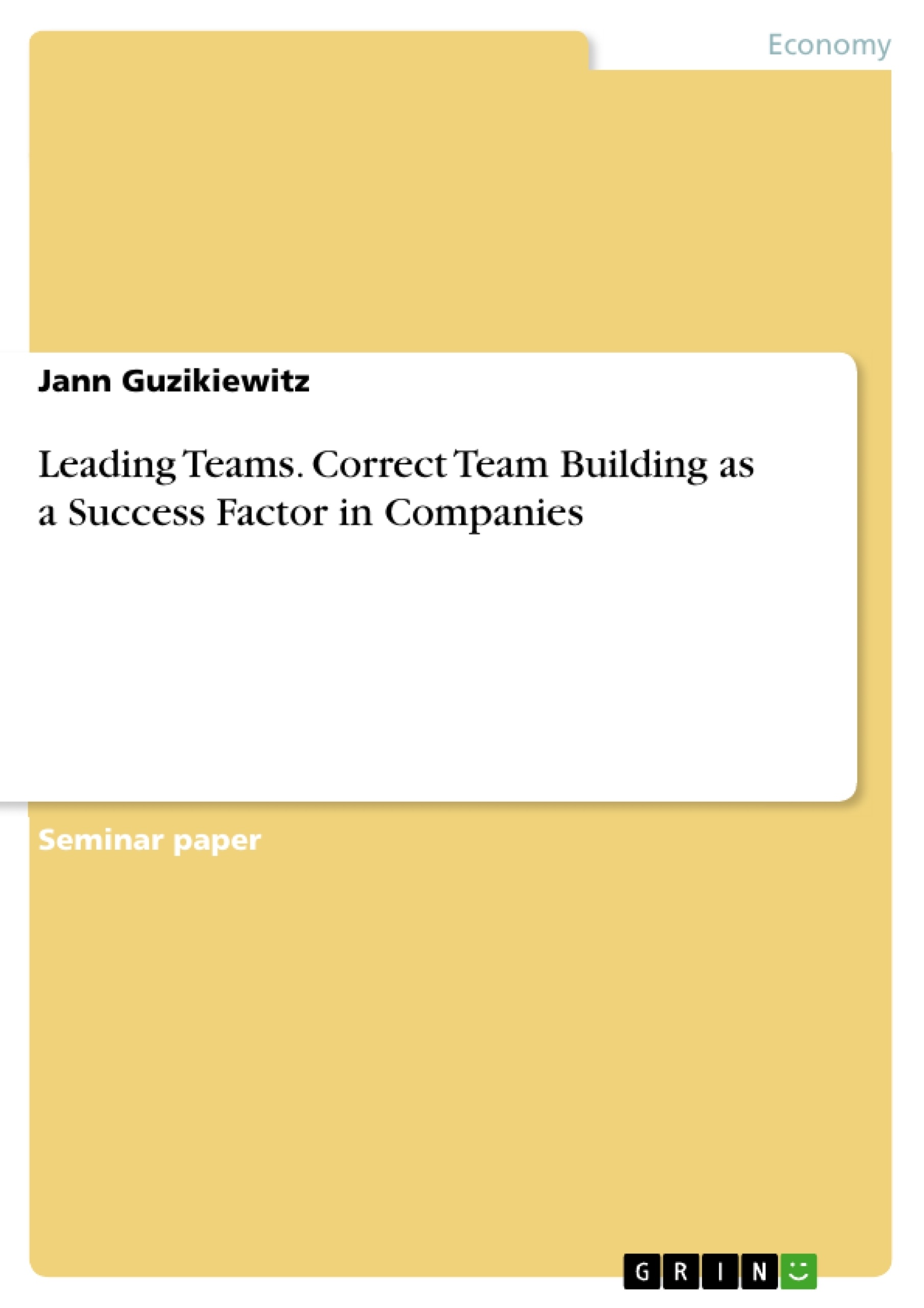The paper provides a general definition for the terms "team" and "leadership", followed by an analysis of how to lead teams effectively. By identifying team dynamics, the different types of teams are explained by using Belbin’s team roles and the dysfunctions of a team. The meaning of leadership is reconsidered in this context. The role of a leader is analysed along with different leadership styles. An example of a team at ABC working against the corporate strategy is examined, ABC’s strategic direction and export team described, and the current team structure and dynamics analysed. A GAP-Analysis is made, leading to recommendations of action.
Today’s organisations are facing the challenges of the 21st century. Globalisation as well as a radical transformation in structure, resources, and expertise is increasing the level of competition in industry. One of the effects is that many successful companies have changed their organisation structure from a functional matrix and to a dynamic, team-orientated system. Thus, teams are key elements of organisations' business results by becoming performance and learning centres.
Teams are more than just a group of people working together. It is about the dynamics in the team. These team dynamics are responsible for a team's success or failure. Today’s teams are more diverse, geographically dispersed, digital and dynamic than ever before. The management of teams is the critical success factor for organisations and has become a complex challenge for all team leaders. It is necessary to strenghten skillsleading to an understanding of team dynamics and to the ability to identify potentials and synergies as well as risks and weaknesses of teamwork within the own organisation. To generate future competitive advantages and sustainable growth companies need to build high-performing teams that align all members to work towards a common goal and maintaining the strategic direction of the company.
Therefore, this paper will examine team dynamics. It will analyse how organisations and team leaders can build teams that work towards a common goal, in accordance with the organisational strategy.
Inhaltsverzeichnis (Table of Contents)
- Introduction
- Definition of the Problem and Task Description
- Aims, Objectives and Structure
- Definition
- Team
- Team vs. Group
- Leadership
- Leading Teams
- Analysing Team Dynamics
- Types of Teams
- Belbin's Team Roles
- The Five Dysfunctions of a Team
- Building an effective Team
- Leading a high-performing Team
- Role of the Team Leader
- Leadership Styles
- Analysing Team Dynamics
- Analysis and Evaluation of the ABC's Export Team
- Company Review
- Corporate strategy
- Analysis of ABC's Export Team
- Structure of ABC's Export Team
- Analysis of ABC's Export Team Roles
- Analysis of potential Export Team Dysfunctions
- GAP-Analysis of the Export Team's Skills and Behaviours
- Leading ABC's Export Team to Success
Zielsetzung und Themenschwerpunkte (Objectives and Key Themes)
This assignment explores the principles and practices of leading teams, with a specific focus on the challenges and opportunities associated with the ABC Export Team. It aims to define key concepts of teamwork and leadership, analyze the team's dynamics, identify potential dysfunctions, and provide actionable insights for improvement.
- Defining and understanding team dynamics and leadership styles.
- Analyzing the ABC Export Team's structure, roles, and potential dysfunctions.
- Identifying and addressing skill gaps within the team.
- Developing strategies for building a high-performing team and achieving success.
- Applying theoretical frameworks to real-world team management challenges.
Zusammenfassung der Kapitel (Chapter Summaries)
The first chapter introduces the problem and the aim of the assignment. The second chapter defines key concepts, including the differences between teams and groups, and explores different leadership theories. Chapter 3 delves into the practice of leading teams, analyzing team dynamics, identifying effective team building practices, and exploring different leadership styles. Chapter 4 examines the ABC Export Team in detail, analyzing its structure, roles, and potential dysfunctions. It identifies skill gaps and suggests ways to address them to improve the team's performance.
Schlüsselwörter (Keywords)
The assignment focuses on team dynamics, leadership styles, Belbin's team roles, the Five Dysfunctions of a Team, team building strategies, GAP analysis, and leading high-performing teams. These concepts are applied to analyze the specific case of the ABC Export Team, highlighting the importance of effective teamwork for achieving organizational goals.
- Arbeit zitieren
- Jann Guzikiewitz (Autor:in), 2016, Leading Teams. Correct Team Building as a Success Factor in Companies, München, GRIN Verlag, https://www.grin.com/document/375255



